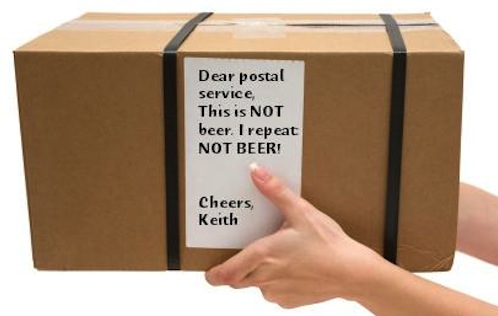Northern Brewer runs specials from time to time where if you spend X number of dollars you get Y for free. I have a Dark Star Burner in my basement still in the box that I obtained from one of these promotions. Last October I didn’t have quite enough in my shopping cart to get the free burner, so I bought this Australian Sparkling Ale kit with the idea I would brew it at some point in the future. I have never brewed, drank, or even seen an Australian Sparkling Ale so I am excited to try one for the first time.
Australian Sparkling Ale is similar to California Common in the sense that both styles are synonymous with one commercial example and one hop. Fullsteam’s flagship is a California Common, Smuttynose collaborated with Stoneface and Deep Rhythm on one, but the archetype will always be Anchor Steam. With Australian Sparkling Ale, the style practically starts and ends with Cooper’s Sparkling Ale. Yes, the same Cooper’s as the Cooper’s Ginger Beer kit I just brewed.
While California Common almost always uses Northern Brewer hops, Australian Sparkling Ale employs Pride of Ringwood hops. Modern ANZAC hop varieties like Galaxy and Nelson Sauvin tend to be fruity, Pride of Ringwood is spicy, herbal, and quite distinctive.
I first heard of the style in the January/February issue of Zymurgy. Author Amald Turrczyn Scheppach discussed how the style was developed by British immigrants trying to replicate Burton-style ales in colonial Australia. Just as many American beers in the colonial period used molasses to compensate for the scarcity of malt due to its abundance, in Australia they would use abundant cane sugar. The article suggests making invert sugar. Failing that, Belgian candi sugar is supposedly a good substitute, while cane sugar is something of a last resort.
The Zymurgy article claims the blend of yeasts in Cooper’s Sparkling ale has a profound impact on the beer. Although Cooper’s sells their own branded dry yeasts, and there are liquid Australian Ale yeasts available, it is not the same yeast used the commercial beer. Cooper’s Sparkling Ale is bottle conditioned meaning the same yeast used to ferment the beer is used to naturally carbonate the beer. The article suggests culturing the yeast from the bottle to replicate the esters and high attenuation. If I could find any of Cooper’s beers in a local bottle shop I might try it.
Cooper’s malt extract uses the same barley and comes from the same malt house that Cooper’s uses for their commercial beers. If trying to straight up clone Cooper’s Sparkling Ale it would make sense to use their extract. Making invert sugar and culturing yeast from the bottle would certainly be going the extra mile. I am content not trying to clone Cooper’s Sparkling Ale so I just used the ingredients and instructions that came with the kit. The sugar contribution in the kit is a 5 ounce addition of corn sugar which should lighten the body of the extract kit. If I had light candi sugar I would use it, but I already used it to brew WAR IPA.
I bought the kit with a packet of Nottingham dry yeast, but the recommended liquid yeast coincidently is WLP023 Burton Ale which I have been used in my Hot Stove Porter, Curly’s Milk Stout, and Midlands Mild. I can harvest slurry from Midlands Mild and have all the yeast I need for this batch. I am guessing the idea with the yeast selection is perhaps to tie the style back to it’s Burton roots.
Instead of pre-treating my water with a campden tablet, I ran all of my water through a water filter. This method is workable when you only boil 2.5 gallons and can filter top-off water while the wort is chilling in an ice bath.
The instructions said to add the last hop addition at 20 minutes left in the boil and add six pounds of liquid malt extract at 15 minutes. Adding all that extract at 15 minutes instead of flameout will reign in the bitterness to a degree as the thicker the wort the lower the hop utilization. It took awhile for the wort to get back to boiling after adding all that extract. I turned up my burner, looked away for one minute, and had a huge boil-over on my hands!
I have been brewing a lot of kits as of late. This beer is all about trying something new. Were it not for home brewing, who knows when I would be able to try an Australian Sparkling Ale? For my upcoming brews I will get back to creating and brewing my own recipes.
Follow me on Twitter @JChalifour
Like The Would-be Brewmaster on Facebook
Share what beers you are drinking with me on Untappd














